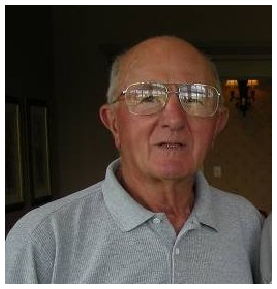June 2003 Article Wild Cards Archives:
Tennis Server
|

 |
by Tony Severino Certified Instructor 4A Professional Tennis Registry
"Scratch your back!
Aunt Hazel's tennis friend, Sylvia, was describing how her "instructor" taught her to serve. The only thing I could think to add was:
"Sylvia! Get your money back!"
Which to address first, the "instructor" or the "technique?"
The "Tennis Instructor"
Almost anyone with a hopper of tennis balls and a tennis racquet can call themselves a "Tennis Instructor", and many do.
Tennis technique has developed exponentially over the past several years so that even a certified tennis instructor needs to upgrade at places like the PTR International Symposium in Hilton Head each February, or the USTA Tennis Teachers Conference in New York City during U.S. Open time. Even the more local, sectional events like USTA Middle States' Annual Tennis Conference in Hershey, PA. continue to examine the changing game of tennis. That's not to say the established standard techniques are obsolete. Not at all. They still provide the foundation, but equipment has evolved and strokes have been enhanced. Instruction approaches have changed considerably.
Sylvia Was Not My Student
Sylvia was not my student so I avoided trying to instruct her, but I could not resist lecturing her from my favorite soapbox.
"Sylvia," I said, "When you or anyone else takes tennis lessons you have a right to ask your instructor three things: Are you a Certified Instructor? By which organization?--usually USPTA or PTR; and
at what level?"
The level indicates that the instructor is keeping up with developments and new techniques in tennis instruction and equipment.
I noticed Aunt Hazel puff up and beam with an aunt's pride. Obviously, they had had this conversation before.
"Don't let the logos on their hat or sweat shirt fool you," I continued. "Anyone can purchase them. They can even join USPTA or PTR and not take the certification examination."
Sylvia stared glumly, straight ahead. It was clearly time to move to a more positive venue. So we discussed briefly the progressions in the serving technique taught by PTR. I wasn't her instructor so we just talked.
The "Too" Serve
And there were things to talk about.
If you follow Tennisserver you certainly know about John Mills' "Tennis Anyone" column. He recently described "The 'Too' Serve" and we pantomimed through that. Here is an abbreviated reprise of John's "Too" serve.
The Trophy Look
Vic Braden, in his video, "Serve" demonstrates that it is not possible to serve from the stance of the player on many tennis trophies. Both arms are in the raised position, but the ball is still in the player's hand. He calls this "The Trophy Look."
Some pros use a modern version of this stance with an abbreviated serve motion where both arms are raised up together with the racquet back but not down, i.e. Mary Pierce, Patrick Rafter, Andy Roddick.
PTR's Dr. Ben Kibler and Dennis Van der Meer point out that this kind of serve generates the same power as the back and down approach, but over a shorter time period. Therefore, without a proper shoulder rotation there is a potential for serious shoulder problems.
The "Waitress Position"
Dennis Van der Meer estimates that over 50% of club level players serve from a "Waitress Position." That is where in the racquet back position the racquet face is parallel to the ground rather than on edge and down, very much like a waitress holding a serving tray.
Dennis explains that when the racquet is back on edge and the elbow is bent, it straightens out as it comes forward. The forearm turns outward so that the wrist can roll and snap outward. This gives the racquet maximum acceleration.
In the Waitress Position this secondary function of the elbow is eliminated, hence there is no wrist roll, only a wrist snap. This is a far less effective serve and puts stress on the wrist, which could lead to a strained wrist.
Aunt Hazel Is My Student
This column, of course, is not meant to be an instructional on the serve. It does try to illustrate that even certified tennis instructors have many reasons to keep current.
Since Aunt Hazel is my student, I can give her instruction. Her serve had fallen into the "Waitress Position" syndrome. So we began work on her backswing and we got her to bring the racquet back on edge, and down, away from the body and ready to start forward. Pronation had to follow if she was to hit the ball. So we were at this point.
" Now pronate as you contact the ball!" If you wish to provide a comment to the author of this Wild Cards column, please use this form. Tennis Server will forward the comment to the author.
1998 - 2003 | 2004 - Present
This column is copyrighted by the author, all rights reserved.
|



October 2022 Tennis Anyone: Patterns in Doubles by John Mills. September 2022 Tennis Anyone: Short Court by John Mills. |
 You will join 13,000 other subscribers in receiving news of updates to the Tennis Server along with monthly tennis tips from tennis pro Tom Veneziano.
You will join 13,000 other subscribers in receiving news of updates to the Tennis Server along with monthly tennis tips from tennis pro Tom Veneziano. 